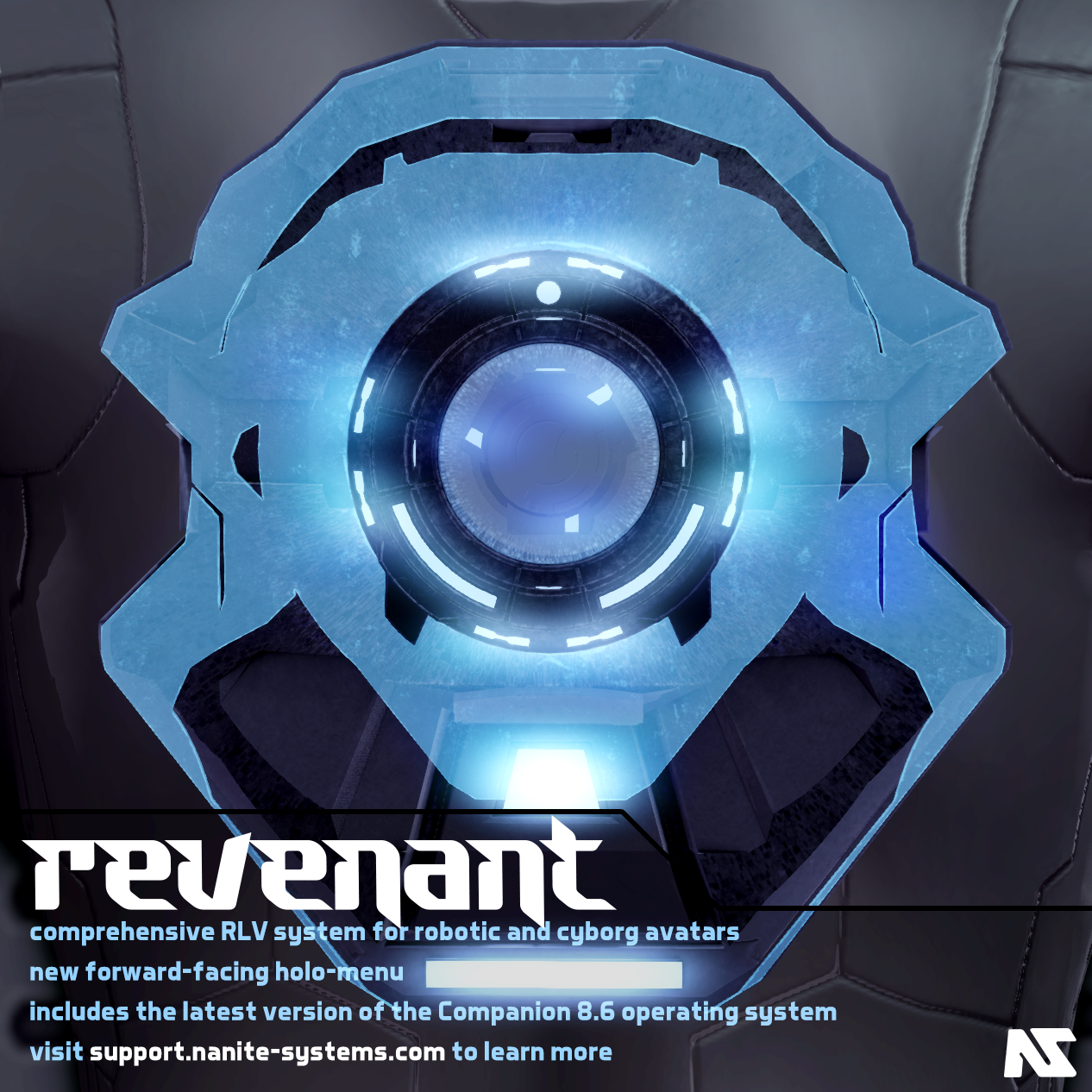NS-478 Revenant

NEW EISA VILLAGE, EISA—Following many hard, long months of intensive research studying the mysterious ruins unearthed beneath the former Eisa Colony site, engineers at the Nanite Systems Xenoarchaeological Technology Transfer Group have successfully manufactured a miracle, raising an ancient technology from the dead: the reprogrammable hardware left behind by Eisa's first-ever occupants.
The new controller, dubbed the NS-478 REVENANT, in reference to its journey of resurrection, offers the best of our flagship combat hardware platforms in reliability and performance while also leveraging the unique material properties of the xenological results. In addition to being fully ready for ATOS/CX, the NS-478 uses a unique hard-light barrier to protect crucial systems and can project a holographic display ventrally (forward) despite being back-mounted.
The NS-478 Revenant is already available at Nanite Systems flagship stores, and includes a steel nanoweave faceplate for night operations. The manufacturer suggested retail price (MSRP) for the Revenant is L$1200. An upcoming patch for the control system will add in the ability to control the orientation and offset of the screen projection.
In late 2018, Eisa Colony, the major settlement on the small resort moon Eisa, suffered a catastrophic disaster when a test of an illegal faster-than-light engine triggered a gravitational resonance cascade in a mineral deposit beneath the colony. An estimated 8740 civilians and Nanite Systems personnel were killed, with more than ten thousand more injured. Property damage was estimated at $14.2 billion, including $4.5 billion in destroyed or damaged robots.
In the wake of this disaster, rescue efforts were hampered by interference from a large number of autonomous aerial drones, which were initially believed to be the second phase of a deliberate terrorist attack but subsequently determined to have originated beneath the moon's surface, deep in the crater created by the explosion. Upon determining the drones were not of Terran origin, the company leveraged its extensive contacts in academia and the private sector to assemble the first-ever team of xenoarchaeologists, who would spend the next two years studying the ruins and the technology they contained. This unique multidisciplinary group has since spent almost two years studying the technology of the crater, and to date Nanite Systems has successfully brought four different products to market, based heavily or exclusively on reclaimed machinery.
Among the many devices uncovered during the XTTG excavation of the Eisa site were the oXq.205 series of oXq.205 series of robot control units, specifically a little-known variant called the oXq.205.0x. Superficially similar to the 205.4i in size and shape, the 0x modules were found to be much more programmable and are believed to have been hand-built prototypes for the 4i, 8i, and likely many other 205 models that have yet to be discovered.